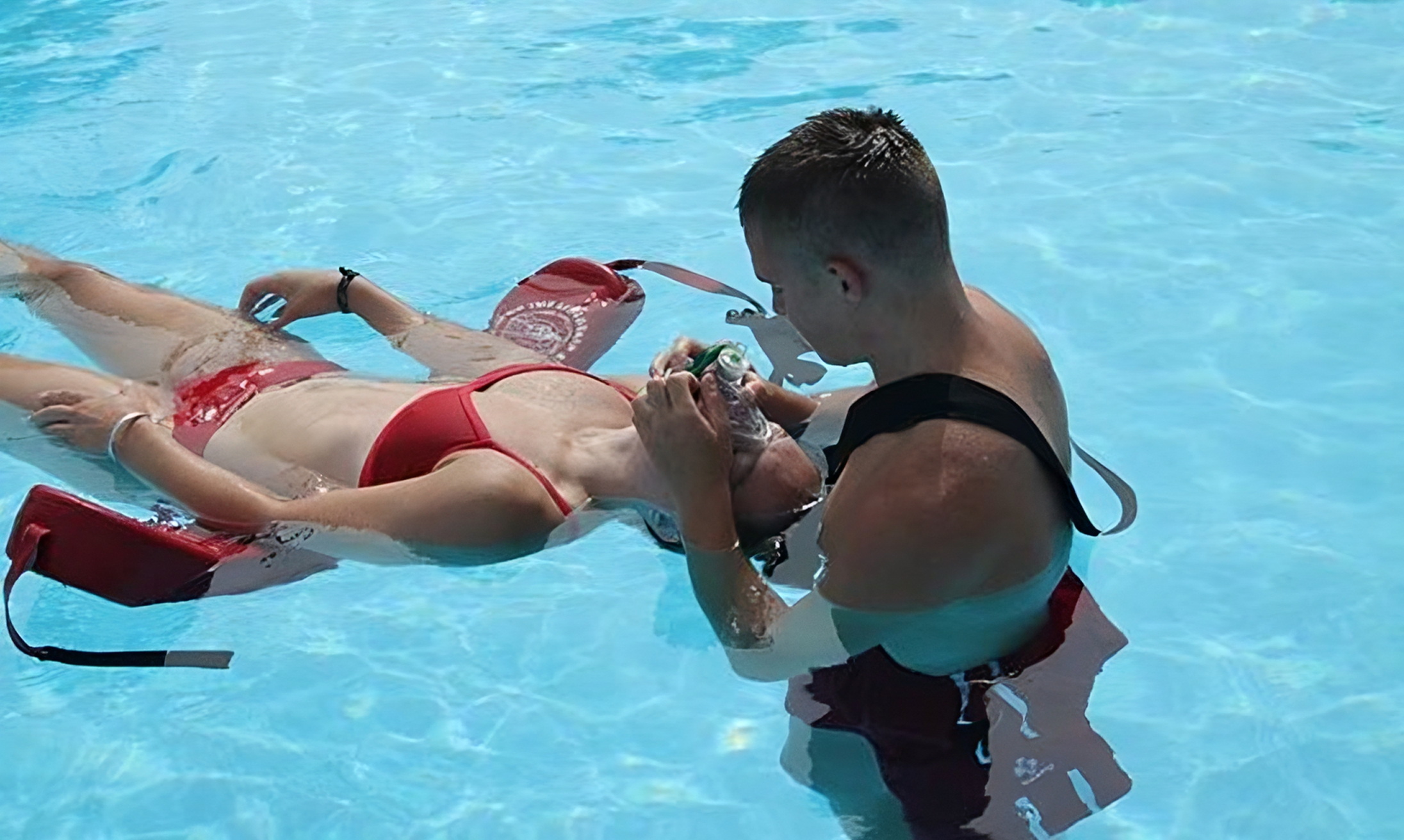Quickly providing care to a victim who is in respiratory or cardiac arrest is very important. Allowing too much time to pass before care is provided can make the difference if a victim survives respiratory and cardiac arrest. As a result, we have included in a skill to provide ventilations in the water prior to removing a victim. This is included based on guidelines from the 2011 United States Lifeguard Standards Coalition and advocated by many lifeguard programs.
With that stated, the 2011 USLSC clearly states the survival rate is increased in open water settings. The studies cited advocating in-water ventilations were conducted in open-water settings where victims were minutes away from shore. No research has been shown (or done that we can find) to show in-water ventilations improves outcomes for drowning victims in swimming pools. If a facility is operating within the standard of care and has sufficient staff trained to properly remove a victim from the water, we cannot see the time spent providing in-water ventilations vs removing a victim and providing care to have a meaningful improved outcome. This makes the skill unnecessary in a pool setting. Care can certainly be provided more effectively on land-especially for CPR and airway management.
A more updated review of in-water ventilations, as well as, other resuscitation interventions for drownings, have found the efficacy of in-water ventilations to be inconclusive. In fact, the study most cited by advocates of the skill from Brazil “was assessed as providing very low certainty evidence.”
This skill is optional for the certified course, but is included to allow aquatics managers to use the skill for in-service training if they decide it is necessary. We certainly understand the need for this skill in an open water environment. However, without corroborating research, this may not be the case in a swimming pool or water park facility-assuming the facility is operating at a high level and has adequate staff trained on how to remove a victim from the water.

